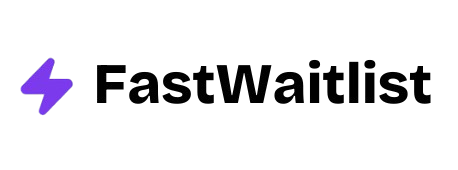
Introduction
Growing your SaaS business feels like climbing a mountain. You face tough competition, changing customer needs, and the pressure to keep improving your product. Many SaaS companies struggle to find new customers while keeping their current ones happy.
We've gathered proven growth strategies that actually work right now. These practical steps will help you attract more customers, reduce cancellations, and increase your monthly revenue. Our guide focuses on what's working in today's market, with clear steps you can start using in your business right away. You'll learn how to stand out from competitors and build a stronger connection with your target audience.
Product Market Fit Optimization
Your product needs to solve real problems for real customers. Product market fit isn't a one-time achievement but an ongoing process that requires constant attention and adjustment. As you grow through product led growth, your users' needs and market conditions will change, making it crucial to stay responsive and adaptable.
Here are the key indicators that show you're on the right track:
- User Engagement: Active users, time spent in app, feature adoption rates
- Customer Feedback: Support ticket themes, feature requests, satisfaction scores
- Market Signals: Sales cycle length, conversion rates, customer acquisition costs
- Competition Analysis: Win/loss reasons, market share trends, pricing position
Getting feedback is essential, but acting on it is what truly matters. Create regular check-ins with your customer success team to understand common user challenges. Set up automated surveys at key moments in your user journey. Review your product analytics weekly to spot trends early. These feedback loops help you make informed decisions about product development.
Want to test if your product idea has legs? FastWaitlist helps you validate your concept before investing significant resources. By collecting early user feedback and measuring genuine interest, you can refine your offering based on real market demand. This approach reduces the risk of building something nobody wants and helps you focus on features your future customers actually need.
Customer Acquisition Framework
Getting customers for your SaaS product requires a smart mix of marketing channels that work together. Your SaaS marketing strategy needs to match where your potential customers spend their time and how they prefer to learn about new solutions. Some buyers might find you through search engines, while others prefer social media or industry events.
Building multiple ways to reach customers helps protect your business from sudden changes in any single channel. Start with one channel that shows the most promise for your target audience, then expand gradually. For example, if you sell to businesses, LinkedIn might be your starting point, followed by content marketing and email campaigns. This way, you'll learn what works best without spreading your resources too thin.
Keeping your customer acquisition costs low while growing is crucial for long-term success. Focus on your SaaS growth metrics to understand which channels bring in customers at the best price. Track your conversion rates across different touchpoints and adjust your spending based on what the data tells you. Pay special attention to how long it takes to recover your acquisition costs through customer payments, and use this information to fine-tune your marketing mix.
Revenue Optimization Strategies
Your pricing strategy can significantly impact your SaaS company's growth. Setting the right price isn't just about covering costs. It's about finding the sweet spot where your customers feel they're getting great value while your business stays profitable. Start by analyzing your competitors and understanding what your target market will pay for your solution.
Value-based pricing puts your customers' needs first. Instead of focusing on costs or competition, look at how much money or time your software saves your customers. For example, if your product helps businesses save 20 hours of work each month, calculate that value in terms of employee costs. This approach helps you set prices that reflect the real benefits your customers receive.
Smart SaaS sales strategies include thoughtful upselling and cross-selling opportunities. Look for natural moments to offer premium features or complementary products that truly benefit your users. The key is timing these offers when customers are most likely to see their value. Consider offering upgrades when users hit usage limits or introducing additional tools when they're actively using related features. Always prioritize customer success over quick sales to build lasting relationships.

User Onboarding Enhancement
Your SaaS onboarding process shapes how quickly users understand and start using your product. A well-planned onboarding experience helps users see value faster and increases the likelihood they'll stick around longer. This initial interaction sets the foundation for user satisfaction and future growth.
You can create personalized welcome flows based on user roles, company size, or specific goals. For example, a project manager might need different features than a content creator. By showing each user exactly what they need, you'll help them feel more confident with your product from day one. This personal touch makes users feel understood and valued.
Getting users to their first success quickly matters more than having lots of features. You want to guide them to that "aha moment" where they see real value in your product. This means focusing on the core value proposition first and introducing additional features gradually. Simple progress indicators and celebration messages can encourage users to complete their setup and start using your product effectively.
Customer Success Focus
Your customers' success directly impacts your growth. When customers get value from your product, they stay longer and recommend it to others. A proactive approach to customer success means solving problems before they appear. You'll want to check in with customers regularly, offer training resources, and create helpful content that answers common questions.
Understanding your customers' health is crucial for growth. Customer health scores tell you which accounts need attention and which are ready for expansion. You can track important signals like product usage, support tickets, and engagement with your content. These insights help you spot opportunities to improve the customer experience and prevent cancellations before they happen.
Building customer success playbooks gives your team clear steps to follow. Start with common situations like customer onboarding or feature adoption. Write down what works best and update these guides as you learn more. Your playbooks should include specific actions, timing guidelines, and communication templates. This systematic approach helps your team deliver consistent results and scale your customer success efforts as you grow.
Retention Optimization
Your existing customers are the backbone of your SaaS growth. Understanding and improving your retention metrics helps you build a stable, profitable business. Start by tracking your monthly recurring revenue (MRR), customer lifetime value, and net revenue retention rate. These SaaS metrics give you clear signals about your business health and where you need to focus your efforts.
Preventing customer churn requires a proactive approach. Look for early warning signs like reduced product usage, delayed payments, or fewer logins. Build strong relationships with your customers through regular check-ins and helpful resources. Create an onboarding process that shows your customers quick wins within their first week. Consider offering annual plans with discounts to encourage longer commitments.
Your customers' feedback is valuable gold for your product development. Set up regular surveys, user interviews, and feature request tracking. Pay attention to support tickets and common questions. Use this information to prioritize your product roadmap and fix pain points before they cause cancellations. Remember to close the feedback loop by telling customers when you've implemented their suggestions. This shows you value their input and builds stronger loyalty.

Data Driven Decision Making
Your SaaS growth depends on understanding your numbers. Tracking the right metrics helps you spot opportunities and fix problems before they get bigger. Let's look at the essential metrics you should monitor: Monthly Recurring Revenue (MRR), Customer Acquisition Cost (CAC), Customer Lifetime Value (CLV), and churn rate. These numbers tell you if your business is healthy and where you can improve.
Here's how different analytics tools can help you track these metrics:
| Tool | Key Features | Best For | Integration Options |
|---|---|---|---|
| Google Analytics | User behavior, traffic sources, conversion tracking | Website performance and user journey analysis | Most website platforms |
| Mixpanel | User engagement, funnel analysis, retention tracking | Product usage patterns and feature adoption | APIs, SDKs, web plugins |
| Amplitude | Behavioral analytics, cohort analysis, predictive analytics | Deep user behavior analysis and growth forecasting | Multiple platform SDKs |
Your data is only valuable when you use it to make better decisions. Start by setting clear goals for each metric you track. When you see changes in your numbers, investigate why they happened. For example, if you notice your trial conversion rate dropping, look at recent changes in your onboarding process or pricing structure. Take action quickly based on what the data shows you. Small adjustments based on real data often lead to significant improvements in your SaaS growth.
Growth Team Structure
Building a growth team requires careful planning and clear objectives. You'll need to start with a core team of 3 to 5 people who can work together to achieve your growth goals. The size depends on your current business stage and available resources, but quality matters more than quantity.
Your team needs specific skills spread across different roles. A growth lead manages strategy and coordinates efforts. Product analysts track metrics and identify opportunities. Marketing specialists handle campaigns and user acquisition. Engineers implement growth experiments and technical solutions. These roles can overlap in smaller teams, where people often wear multiple hats. The key is having the right mix of analytical and creative skills to drive growth effectively.
Creating a strong growth culture means encouraging experimentation and learning from failures. Your team should feel comfortable trying new ideas without fear of criticism. Set up weekly meetings to share results and brainstorm solutions. Make data-driven decisions a core part of your process, but remember that creativity and innovation need space to flourish. Celebrate small wins and use them as stepping stones for bigger achievements. This balance of structure and flexibility helps your growth team stay focused while remaining adaptable to new opportunities.
Marketing Automation
Marketing automation helps you scale your SaaS business without scaling your team. Your first step is picking the right automation tools that match your current needs and growth plans. Look for software that integrates with your existing tech stack and offers room for expansion as your customer base grows.
Personalization makes your automated messages feel human and relevant. Start by segmenting your users based on their behavior, such as feature usage or time since signup. You can send targeted emails, in-app messages, and product updates that speak directly to each group's specific needs. This personal touch helps build stronger connections with your users while your automation handles the heavy lifting.
Track your automation success through clear metrics like customer engagement rates and conversion improvements. Focus on measuring the time saved by your team and the increase in customer satisfaction scores. By comparing these results with your investment in automation tools, you'll understand which processes give you the best returns and where to expand your automation efforts next.
Scaling Operations
Your SaaS business needs strong operations to grow. As you get more customers, you'll face new challenges in keeping everything running smoothly. The key is to build systems that can handle growth without breaking down.
Automating your daily tasks saves you valuable time and reduces errors. Start with the basics like customer onboarding and billing. You can set up automatic welcome emails, payment processing, and subscription management. This lets your team focus on solving bigger problems instead of doing repetitive work.
Quality control becomes more important as your business grows. Your customers expect the same great experience whether you have 100 or 10,000 users. Set up clear quality check points throughout your processes. Create guidelines for your team and use monitoring tools to catch issues before they affect your customers. Regular training and feedback sessions help maintain your service standards even as your team expands.
FAQ
What's the fastest way to grow a SaaS business?
Focus on product-market fit first. You'll grow faster by solving a real problem for your target customers. Start with a small group of users who love your product and gather their feedback. Build features they actually need, then use their success stories to attract similar customers through targeted marketing and referral programs.
How much should I invest in customer acquisition?
Your customer acquisition cost (CAC) should be less than the lifetime value (LTV) of your customers. A good rule is keeping your LTV at least 3 times higher than your CAC. Begin with low-cost channels like content marketing and social media. As you prove your model works, gradually increase your marketing budget based on clear return on investment.
When should I focus on retention vs. acquisition?
Start working on retention right away. Happy customers who stay longer are worth more and bring in referrals. Look at your churn rate. If you're losing more than 5% of your customers monthly, pause your acquisition efforts and fix your retention issues first. Your product needs to be sticky before you spend big on getting new users.
How do I know if my growth strategy is working?
Watch your monthly recurring revenue (MRR) growth rate and customer satisfaction scores. Your strategy works when you see steady MRR increases and positive customer feedback. Set clear monthly goals for key metrics and review them regularly. Good signs include increasing user engagement, more referrals, and lower support tickets.
What are the most important metrics to track?
Focus on these key performance indicators:
- Revenue metrics: MRR, ARR, revenue churn
- Customer metrics: Active users, conversion rate, customer churn
- Usage metrics: Feature adoption, login frequency, time in app
- Cost metrics: CAC, LTV, gross margin
Ready to validate your SaaS idea and start building your customer base? Create your waitlist page with FastWaitlist and start collecting valuable customer insights today.
